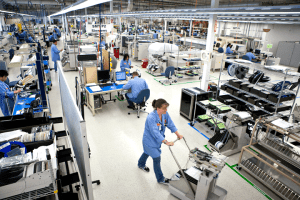Low-tech manufacturing, the new hidden champion of innovation
The so called “Low Tech” companies are vitally important because they employ 60% of workers.
We have been overlooking the value and innovation that goes on in so called “low tech” companies, according to a European expert on industry.
Auckland University recently hosted Prof. Dr. Hartmut Hirsch-Kreinsen Chair of Economic and Industrial Sociology TU Dortmund University, Germany.
He spoke about the latest research that is uncovering these “low tech” innovators. He says everyone has been in love with “high-tech”companies, the definition of which is companies that have an R & D investment of over 5% of turnover and “low tech” having 1% or less investment in R & D. However the so called “Low Tech” companies are vitally important because they employ 60% of workers – many more than the medium to high tech companies, and they are remarkably stable and innovative in a specific way.
Common attributes are step by step product improvement, incremental innovation, small batches and also large scale production, relatively stable market segments, close to important customers, flexible and fast delivery, and semi-skilled or unskilled workers. They have the capacity to integrate external knowledge and high tech components and are the recipients and carriers of high tech innovations. They learn by doing, trial and error and have the capability to manage networks.
Policymakers (Callaghan Innovation and MBIE) should also focus on the so called “low-tech” businesses. Innovation is more than just R & D investment as low tech businesses are good at using high tech developed elsewhere and leveraging it in innovative ways. So what can policy makers do to support? Prof Kenneth Husted from Auckland University says;
• Support creative reconstruction (don’t write off industries as “sunset” just because they are going through change)
• Stimulate collaboration across sectors and size
• Support to aggregate local lead user needs (e.g. innovation consulting services – in the absence of a large business ecosystem)
• Support locally embedded technology commercialisation and growth (e.g. technology parks)
• Leverage public procurement to stimulate innovation (this is one I have been promoting for some time now)
• Produce more people with tertiary qualifications in manufacturing.
The upshot of all this is that we may need to question the validity of R & D intensity indicators as a good basis for innovation policy.



